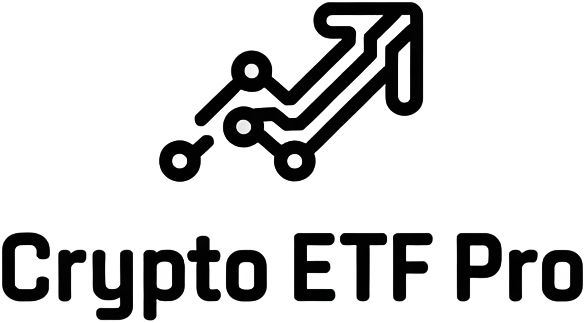
Institutional investors are fundamentally reshaping the crypto landscape in 2025, with record-setting Bitcoin ETF inflows catalyzing a new era of portfolio diversification for pensions and endowments. In the week ending October 4, global cryptocurrency ETFs attracted a staggering $5.95 billion in inflows, with Bitcoin alone accounting for $3.55 billion. This surge coincided with Bitcoin’s price reaching a new all-time high of $113,600.00, underscoring the growing conviction among institutional allocators.
Why Institutional Confidence in Crypto ETFs Is Surging
The shift from skepticism to strategic allocation is unmistakable. Pension funds and university endowments are no longer just exploring crypto as an asset class, they are actively integrating Bitcoin ETFs into their core portfolio strategies. The State of Wisconsin Investment Board, for example, more than doubled its Bitcoin ETF holdings to 6 million shares by late 2024. Similarly, Harvard Management Company now holds approximately 1.9 million shares of BlackRock’s iShares Bitcoin Trust (IBIT), valued at about $116 million.
This trend is not isolated to a handful of bold institutions. According to recent surveys, pension funds, endowments, and family offices across the US and globally are now allocating between 0.5% and 2% of their portfolios to Bitcoin ETFs. BlackRock itself recommends up to a 2% allocation for interested investors, an endorsement that has helped legitimize the asset class for traditionally conservative allocators.
Portfolio Diversification: The New Narrative for Pension Funds and Endowments
The rationale behind these allocations is both pragmatic and strategic:
- Inflation Hedge: With persistent macroeconomic uncertainty and inflationary pressures, institutions increasingly view Bitcoin as a hedge against currency devaluation.
- Diversification Benefits: Bitcoin’s historically low correlation with equities and fixed income makes it an attractive diversifier within multi-asset portfolios.
- Regulatory Clarity: Regulatory advancements have provided much-needed legal certainty, further reducing institutional hesitancy.
These trends are supported by data showing that institutional investors have increased their digital asset allocations throughout 2025, with total inflows into Bitcoin ETFs reaching $57 billion year-to-date. Notably, BlackRock’s IBIT now boasts approximately $86.17 billion in assets under management, reflecting both robust inflows and price appreciation.
Bitcoin Price Prediction 2026-2031: Institutional ETF Impact Outlook
Professional forecast based on 2025’s record-setting institutional inflows and continued adoption by pensions, endowments, and sovereign funds.
| Year | Minimum Price | Average Price | Maximum Price | Year-over-Year % Change (Avg) | Key Market Scenario |
|---|---|---|---|---|---|
| 2026 | $91,500 | $128,000 | $156,000 | +12.7% | Sustained ETF inflows; minor regulatory headwinds |
| 2027 | $109,000 | $144,500 | $186,000 | +12.9% | Further ETF adoption; moderate bull cycle |
| 2028 | $123,000 | $163,800 | $217,000 | +13.4% | Global sovereign funds increase Bitcoin ETF allocations |
| 2029 | $138,500 | $186,100 | $253,000 | +13.6% | Major pension funds worldwide reach 2% allocation targets |
| 2030 | $155,000 | $211,200 | $294,000 | +13.5% | Broader regulatory clarity in US/EU; Bitcoin as standard portfolio asset |
| 2031 | $175,000 | $239,400 | $340,000 | +13.4% | Next halving cycle anticipation; technology and scaling improvements |
Price Prediction Summary
Bitcoin is projected to maintain an upward price trajectory from 2026 to 2031, driven by persistent institutional ETF inflows, growing adoption by pension funds and endowments, and increasing regulatory clarity. The average price is expected to rise steadily, with bullish scenarios driven by macroeconomic uncertainty and Bitcoin’s growing status as a portfolio diversifier. Bearish minimums reflect potential global regulatory crackdowns or major market corrections, but the overall trend remains positive.
Key Factors Affecting Bitcoin Price
- Record institutional ETF inflows and growing allocations by pensions and endowments
- Increasing global regulatory clarity supporting institutional adoption
- Macroeconomic environment (inflation, currency devaluation) encouraging Bitcoin as a hedge
- Continued low correlation with traditional assets enhancing diversification appeal
- Potential for new technology developments (scaling, security, interoperability)
- Possible competition from other digital assets or adverse regulatory shifts
- Market cycle dynamics, including halving events and liquidity trends
Disclaimer: Cryptocurrency price predictions are speculative and based on current market analysis.
Actual prices may vary significantly due to market volatility, regulatory changes, and other factors.
Always do your own research before making investment decisions.
Case Studies: How Leading Institutions Are Allocating to Bitcoin ETFs
The impact of these shifts is evident in recent public disclosures:
- State of Wisconsin Investment Board: Increased its Bitcoin ETF exposure to 6 million shares by Q4 2024.
- Michigan State Retirement System: Boosted its ARK 21Shares Bitcoin ETF holdings from 110,000 to 300,000 shares within a single quarter.
- Harvard Management Company: Holds roughly 1.9 million IBIT shares, an allocation valued at $116 million.
- Brown University: Expanded its IBIT position to approximately $13 million.
This institutional momentum is not only a sign of growing confidence but also a structural shift in how large pools of capital approach risk and return in the digital age. As more pension funds and endowments follow suit, the role of institutional bitcoin ETF inflows in 2025 will be central to the evolution of diversified investment strategies.
While the headlines focus on monumental inflows and headline-grabbing allocations, the underlying dynamics reveal a more nuanced transformation in institutional portfolio construction. The adoption of Bitcoin ETFs is not merely about chasing returns; it’s a deliberate response to an evolving risk landscape and the need for alternative sources of uncorrelated growth. Pension funds and endowments, long bound by conservative mandates, are now leveraging Bitcoin ETFs as a tool to enhance overall portfolio resilience.
Risk Management and Rebalancing in a Crypto-Integrated Portfolio
Integrating Bitcoin ETFs into pension and endowment portfolios introduces new challenges, and opportunities, for risk management. Unlike direct crypto holdings, ETFs offer daily liquidity, robust custodial frameworks, and regulatory oversight. This structure enables institutions to rebalance their allocations efficiently in response to market movements or policy changes.
The current price of Bitcoin at $113,600.00 has introduced fresh volatility into institutional portfolios. However, for many CIOs, this volatility is viewed through the lens of modern portfolio theory: when combined with traditional assets like equities and bonds, Bitcoin’s unique risk-return profile can actually reduce overall portfolio risk due to its low historical correlation with legacy markets.

Portfolio managers are increasingly employing systematic rebalancing strategies, setting predefined allocation bands for their digital asset exposure and adjusting positions as prices move. For example, if Bitcoin surges well above $113,600.00 in a given quarter, some funds may trim exposure to lock in gains while others may use price dips as entry points to maintain target weights.
The Ripple Effect: Broader Market Impact of Institutional Allocations
The influx of institutional capital is already having significant market-wide effects. As large allocators commit billions via regulated ETF vehicles, liquidity deepens across spot and derivative markets. This increased participation reduces slippage for all investors and contributes to price discovery mechanisms that are less susceptible to manipulation compared to earlier cycles dominated by retail flows.
Moreover, the normalization of Bitcoin ETF portfolio strategy among pensions and endowments signals to other institutional investors, such as sovereign wealth funds and insurance companies, that crypto can be integrated within established fiduciary frameworks without compromising governance standards.
- Market Stability: Greater institutional presence has been linked with lower realized volatility during market drawdowns.
- Product Innovation: The success of spot Bitcoin ETFs is catalyzing development of multi-asset crypto ETF products tailored for institutional mandates.
- Ecosystem Growth: Increased demand from pensions and endowments accelerates improvements in custody solutions, compliance infrastructure, and reporting standards across the digital asset industry.
Navigating Forward: Considerations for Institutional Allocators
Pension fund bitcoin allocation decisions now involve not just return projections but also scenario analysis around regulatory shifts, tax treatment, operational risks, and reputational considerations. Institutions are enhancing due diligence processes, scrutinizing ETF providers’ security protocols, counterparty exposures, and transparency practices.
The trajectory for institutional confidence in crypto ETFs remains upward as structural barriers continue to fall away. With ongoing education efforts from asset managers like BlackRock and increased peer benchmarking among university endowments, it’s likely that allocations will continue expanding beyond today’s 0.5-2% range over the next several years.
The integration of regulated crypto products into core investment strategies marks a generational shift in how institutions approach diversification, and positions them to navigate an increasingly digital future with greater flexibility and resilience.






